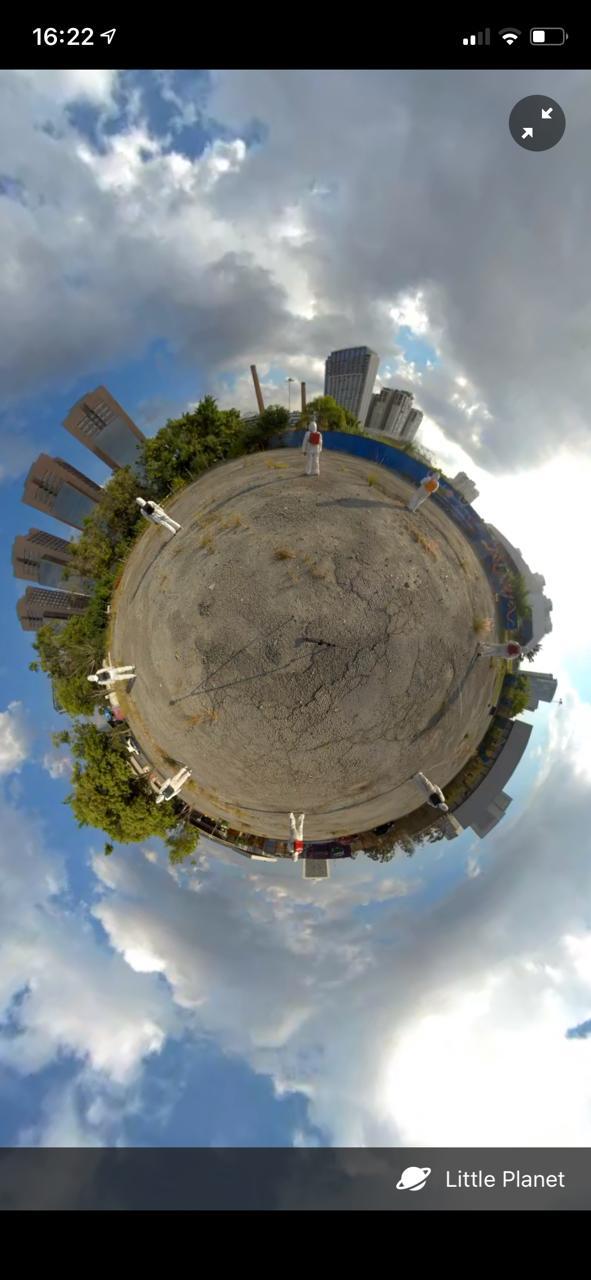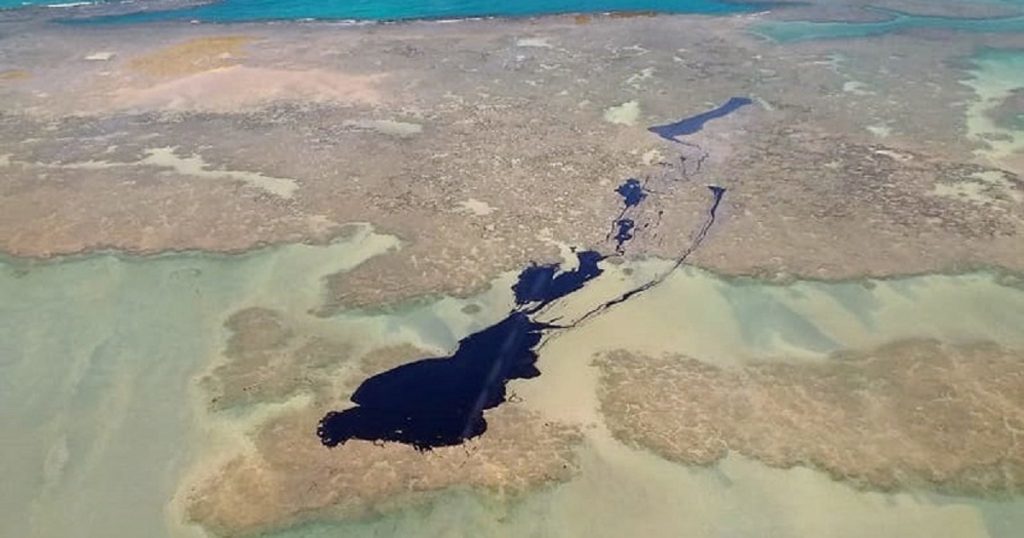Vídeo instalação 3D_360 para Youtube homônima
Homonimous Video installation for 3D_360 Youtube
Comissionado pela Mostra AVXLab 2021 :: lugar (in)comum
Commissioned by AVXLab2021 Festival :: (in) common
Sinopse
‘ILHA :: A Vida é uma Utopia’ é uma intervenção urbana sonora que lida com o complexo tema da contaminação radioativa da água do mar no Japão.
Em ação, oito crianças portando mochilas de couro infanto juvenis japonesas – originalmente doadas para os sobreviventes do Grande Terremoto do Leste do Japão da cidade de Miyagi, e concedidas pela curadoria da mostra Field Trip Project / Field Trip Project Asia – formam um círculo em um local pré-determinado e, juntas, circundam o espaço ressoando o som do mar.
O som do mar usado neste projeto foi gravado nas proximidades da cidade de Nagoya, onde reside a maior concentração de usinas nucleares no país, e suas águas certamente estão contaminadas por poluição industrial.
Neste sentido, traduz a contradição existente na relação dos japoneses para com suas águas marítimas, e nos traz uma importante reflexão sobre os recentes desastres ambientais no país, sobretudo as manchas de óleo que atingiram o litoral nordestino e os rompimentos das barragens de Mariana e Brumadinho.
Realizar esta performance 10 anos depois do Grande Terremoto do Leste do Japão, num momento em que o mundo inteiro está lutando contra uma pandemia, nos coloca numa mesma situação perante a vida. Reforça a crítica decolonial à modernidade via a espiritualidade e relação com a natureza.
Vida e morte, origem e fatalidade, e passado e futuro se relacionam numa contraposição multifacetada de medo e confiança.
Synopsis
‘ISLAND_Life is an Utopia’ is a sound urban intervention that deals with the complex theme of radioactive contamination of sea water in Japan.
In action, eight people carrying Japanese youth children’s leather backpacks – originally sent as relief for the children survivors of Miyagi Prefecture at the Great East Japan Earthquake in 2011, which were donated for Field Trip Project/Field Trip Project Asia – form a circle in a predetermined location and together they surround the space resounding the sound of the sea.
The sound of the sea used in this project was recorded near the city of Nagoya, where the largest concentration of nuclear power plants in the country resides and its waters are certainly contaminated by industrial waste and pollution.
In this sense, it reflects the contradiction that exists in the Japanese relationship with their maritime waters, and brings us an important reflection on the recent environmental disasters in Brazil, especially the oil stains that hit the northeastern coast and the ruptures of the Mariana and Brumadinho dams.
Realizing this performance 10 years after the Great Tsunami and the Great East Japan Earthquake, in a moment we are all committed to fight against a worldwide pandemic, bind us all together towards life and modernity criticism.
Life and death, origin and fatality, past and future are related in a multifaceted counter position of fear and trust.
Conceito :: Manifesto :: Motivação
O tema da contaminação da água e sua escassez nunca esteve tão presente no país. É triste constatar que percebemos o seu valor divino pela sua ausência.
Em ILHA, intento trazer à tona a discussão sobre a nossa relação com a água, e não somente com a água condicionada para consumo doméstico, mas sobretudo, com as águas naturais que tanto enobrecem nossas paisagens e nossas praias.
Nas metrópoles litorâneas, o mar, apesar de não ser habitável e nem irrigado pelo grid de ruas, tem um papel fundamental para a organização estrutural do tecido urbano. Estabelece um contraponto, uma oposição, uma pausa da tensão cotidiana, da ordem urbana, do tempo fluxo contemporâneo. Presentifica o corpo através da sensação táctil, alivia o olhar pela sua pluralidade de cores e suavizam a paisagem sonora com sua constância não rítmica.
Nas cidades do Estado de São Paulo, se pudéssemos enxergar os inúmeros caminhos e recortes que as águas fluviais fazem no espaço urbano, ficaríamos surpreendidos. Rios, riachos e córregos subterrâneos cortam toda a cadeia de montanhas que compõem a cidade. Um paradoxo se pensarmos na crise hídrica que vivemos e que continuaremos a viver se nada for mudado.
Estar no Japão em 2013, circundado pelo mar em todas as direções e ciente que suas águas correm o risco de estarem contaminadas por resíduos radioativos e industriais, e assim impróprias para banho, consumo e pesca para sempre, me fez criar uma relação de respeito e ancestralidade muito profunda com a natureza.
Reviver este pesadelo anos depois com as manchas de óleo nas praias nordestinas, e com os desastres socialmente construídos em Brumadinho e Mariana em Minas Gerais – e a consequente contaminação de 3000 km de águas fluviais e costeiras, e a condenação de dois rios trans-estaduais, o rio Verde e o rio Paraopeba -, nos mostra que realmente não estamos caminhando em direção à vida.
Experienciar uma pandemia em tempo real, e ainda assim assistir protestos negacionistas mundo a fora, é ainda mais assustador: a situação expõe as facetas mais crueis do neoliberalismo. O ar nunca foi tão essencial como agora: pessoas lutam todos os dias para respirar em todos os hospitais do mundo.
Se existem dois elementos vitais que estão presentes em nossas vidas o tempo todo, eles são o ar e a água, e nós humanos não sabemos existir sem poluí-los. Respiramos o ar e 70% do nosso corpo é água.
Deixamos um rastro devastador por onde passamos, pegadas que levarão centenas de anos para serem diluídas no espaço tempo…
Que relação queremos estabelecer com a natureza? E que relação queremos estabelecer com nós mesmos?
Ilha, portanto, propõe uma reflexão sobre nossa relação com água a partir da nossa relação com o outro.
A comunhão, a coletividade, a confiança, o encontro com o estranho, o respeito, a escuta, o tempo da escuta, o espaço da escuta, o momento presente no espaço público, o circular das culturas tradicionais, o ritualístico, o flashmob, a performance, a intervenção urbana.
mAR
Concept :: Manifest :: Motivation
The theme of water contamination and its scarcity has never been more present in the country. It is sad to see that we perceive its divine value by its absence.
In ISLAND I intend to bring up the discussion about our relationship with water, and not only with water conditioned for domestic consumption, but above all, with the natural waters that so much ennoble our landscapes and our beaches.
In coastal metropolises, the sea, despite not being habitable or irrigated by the grid of streets, plays a fundamental role in the structural organization of the urban fabric. It establishes a counterpoint, an opposition, a break from everyday tension, from urban order, from contemporary flow time. It presents the body through the tactile sensation, relieves the eye by its plurality of colors and softens the soundscape with its non-rhythmic constancy.
In the cities of the State of São Paulo, if we could see the countless paths that the river waters make in the urban space, we would be surprised. Rivers, streams and underground streams cut through the mountains that compose the city landscape. A paradox if we think about the water crisis that we are experiencing and that we will continue to live in if nothing is changed.
Being in Japan in 2013, surrounded by the sea in all directions and aware that its waters are at risk of being contaminated by radioactive and industrial waste and, thus, unsuitable for bathing, drinking and fishing, made me create a relationship of respect and very deep ancestry with nature.
Reliving this nightmare in Brazil, years after the great Earthquake of the East of Japan, with the catastrophic oil leak incident on the beaches of the northeastern coast, and with the socially constructed disaster with the Brumadinho and Mariana dams in the state of Minas Gerais – and the consequential contamination with industrial waste of more than 3000 km of fresh and coast waters, and the condemnation of the two huge rivers Doce and Paraopeba – , shows us that we are not really heading towards life.
Experiencing a pandemic realtime and watching negationist protests worldwide is even more frightening: the situation exposes the cruelest social, economic, political, cultural and environmental aspects of neoliberalism. Air never had been so essential then right now: people are struggling to breath in all hospitals in the world.
The moment binds us together towards the same goal: life.
If there are two vital elements that are present in our lives all the time, they are air and water, and we humans do not know how to exist without polluting them. We breathe air and 70% of our body is water.
We leave a devastating trail wherever we go, footprints that will take hundreds of years to be diluted in space time…
What relationship do we want to establish with nature? And what relationship do we want to establish with ourselves?
Therefore, ISLAND proposes a reflection on our relationship with water from our relationship with the other.
Communion, collectiveness, trust, meeting with a stranger, respect, listening, listening time, listening space, space, the circle formations of traditional cultures, the ritualistic, the flashmob, the performance, urban intervention.
SEAir
Direção / Concepção / Realização :: Dudu Tsuda
Cenografia :: Julio Dojcsar
Performance ::
Barbara Milano
Carolina Velasquez
Julio Dojcsar
Mahê Machado
Paulo Stocker
Roberto Santos
Sefora Rios
Sebastião Dojcsar.
Imagens em drone :: Paulo Pereira
Imagens :: Cassandra Mello e Renata Rosa
Montagem e animação :: Renata Rosa



